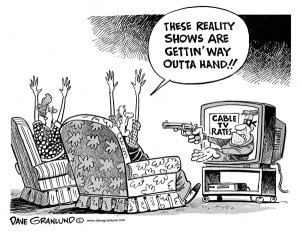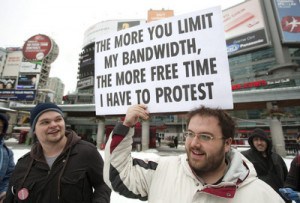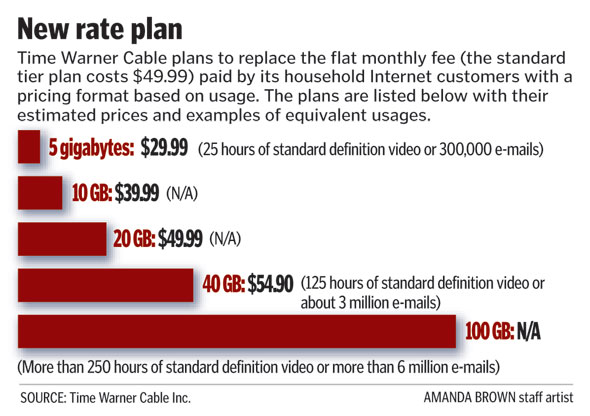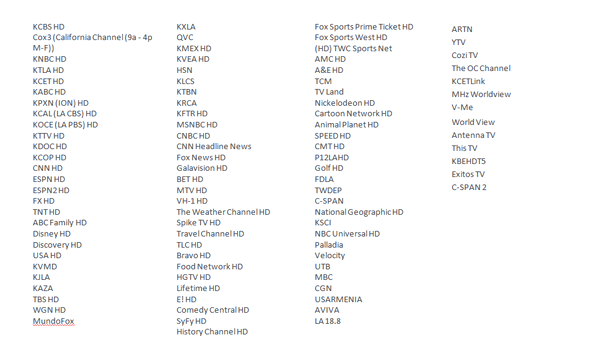
Verizon FiOS is coming to Fire Island.
Verizon Communications has thrown in the beach towel attempting to convince residents of popular tourist destination Fire Island to accept its wireless landline replacement Voice Link as the company’s sole landline service option.
After telling customers for months it did not make financial sense to restore copper service or bring its fiber optic network FiOS to Fire Island, Verizon senior vice president of national operations support Tom Maguire today reversed course.
“In today’s competitive marketplace it’s all about making sure you can take care of customers because if you don’t they can go someplace else,” Maguire told Newsday. “Interestingly on Fire Island, there is no place else, so we listened to our customers. It was pretty apparent that we wanted to do something beyond Voice Link and the wireless network, so we think that fiber is the best course.”
Verizon customers on Fire Island have told Stop the Cap! all summer they felt abandoned by Verizon, stuck using a wireless landline replacement service they claimed worked poorly or not at all at times. Customers also loudly complained that Verizon was effectively forcing broadband customers who depended on Verizon DSL to the much more expensive Verizon Wireless broadband service with a very small usage cap. Many attended meetings sponsored by elected officials or the Public Service Commission to decry Voice Link and demand Verizon offer the same quality service its landline network used to provide.
Maguire told the newspaper the company will now deploy its fiber network FiOS on Fire Island, offering residents new options for telephone and broadband service. The 600 customers on Fire Island with Voice Link will be able to keep the wireless service or switch to FiOS fiber.
Reached for comment, Verizon tells Stop the Cap! its fiber service will not include FiOS TV because Verizon does not have franchise agreements with the many municipalities on Fire Island, and their primary concern is getting the fiber network engineered and constructed.

Schumer
Fire Island residents have made it clear to Verizon their biggest concern is Internet access, not television, and Verizon FiOS will be able to deliver faster Internet speeds unavailable from DSL.
Verizon expects to begin construction in October, although it has already started preliminary design work for the new fiber network. Verizon expects to have the fiber build complete by the beginning of the 2014 summer season on the island.
Sen. Charles Schumer (D-N.Y.), who has been carefully monitoring the Voice Link issue, released a statement welcoming Verizon’s decision.
“By installing fiber-optic cables on the island, Verizon will not only make the system as good as it was before, it will be making it better,” said Schumer. “Fire Island residents will now have greater access to high-speed Internet – a necessity in the modern age – and reliable voice service. Verizon deserves credit for listening to our concerns and changing course.”
In a June guest article written for publication on Stop the Cap!, Maguire wrote it would cost Verizon from $4.8 million to more than $6 million to restore landline service. Maguire argued it made no economic sense to commit to a multimillion dollar investment with no guarantee that residents of the island will sign up for Verizon service.
“That’s probably why Verizon is the sole provider on the island,” Maguire noted in the piece. “None of the companies we compete with in other parts of New York offer services on the island.”
Today’s decision represents a complete reversal of the company’s earlier views, but one that is welcomed nonetheless by residents on Fire Island reached by Stop the Cap! this afternoon.
“We’re very glad this is now over and behind us,” said Verizon customer Shari who has toughed out the summer with cellphone-only service.
“I can’t wait to return Voice Link, which has been a real pain,” said Thom.
Both customers tell Stop the Cap! they intend to sign up for Verizon FiOS the moment it becomes available.


 Subscribe
Subscribe
 “Nearly 30 percent of people are on a prepay mobile plan in 2013,” said Ed Davalos, lead product marketing manager at AT&T, during a recent Greentech Media webinar. “That cannot be overlooked. The consumer has already changed.”
“Nearly 30 percent of people are on a prepay mobile plan in 2013,” said Ed Davalos, lead product marketing manager at AT&T, during a recent Greentech Media webinar. “That cannot be overlooked. The consumer has already changed.”
 Although cable and phone companies love to declare themselves part of a fiercely competitive telecommunications marketplace, it is increasingly clear that is more fairy tale than reality, with each staking out their respective market niches to live financially comfortable ever-after.
Although cable and phone companies love to declare themselves part of a fiercely competitive telecommunications marketplace, it is increasingly clear that is more fairy tale than reality, with each staking out their respective market niches to live financially comfortable ever-after. This is hardly a “War of the Roses” relationship either. Wall Street teaches that price wars are expensive and competitive shouting matches do not represent a win-win scenario for companies and their shareholders. The two companies get along fine where Verizon has virtually given up on DSL. Time Warner Cable actually faces more competition from AT&T’s U-verse, which is not saying much. The obvious conclusion: unless you happen to live in a FiOS service area, the best deals and fastest broadband speeds are not for you.
This is hardly a “War of the Roses” relationship either. Wall Street teaches that price wars are expensive and competitive shouting matches do not represent a win-win scenario for companies and their shareholders. The two companies get along fine where Verizon has virtually given up on DSL. Time Warner Cable actually faces more competition from AT&T’s U-verse, which is not saying much. The obvious conclusion: unless you happen to live in a FiOS service area, the best deals and fastest broadband speeds are not for you. That means Time Warner Cable has an 80 percent market share. Actually, it is probably higher because that total number of households includes those who either don’t want, need, or can’t afford broadband service. Some may also rely on limited wireless broadband services from Clearwire or one of the large cell phone companies.
That means Time Warner Cable has an 80 percent market share. Actually, it is probably higher because that total number of households includes those who either don’t want, need, or can’t afford broadband service. Some may also rely on limited wireless broadband services from Clearwire or one of the large cell phone companies. Rochester remains a happy hunting ground for Internet Overcharging schemes because the only practical, alternative broadband supplier is Frontier Communications, which Time Warner Cable these days dismisses as an afterthought (remember that 80 percent market share). Without a strong competitor, Time Warner has no problem experimenting with new “usage”-priced tiers.
Rochester remains a happy hunting ground for Internet Overcharging schemes because the only practical, alternative broadband supplier is Frontier Communications, which Time Warner Cable these days dismisses as an afterthought (remember that 80 percent market share). Without a strong competitor, Time Warner has no problem experimenting with new “usage”-priced tiers. In nearby Ohio, the average broadband user already exceeds Time Warner’s 30GB pittance allowance, using 52GB a month. Under both plans, customers who exceed their allowance are charged $1 per GB, with overlimit fees currently not to exceed $25 per month. That 30GB plan would end up costing customers an extra $22 a month above the regular, unlimited plan. So much for the $5 savings.
In nearby Ohio, the average broadband user already exceeds Time Warner’s 30GB pittance allowance, using 52GB a month. Under both plans, customers who exceed their allowance are charged $1 per GB, with overlimit fees currently not to exceed $25 per month. That 30GB plan would end up costing customers an extra $22 a month above the regular, unlimited plan. So much for the $5 savings. In addition to an August
In addition to an August 
 Cox Communications has found a new way to target cord-cutters and sell television service to its broadband-only customers reluctant to sign up for traditional cable television.
Cox Communications has found a new way to target cord-cutters and sell television service to its broadband-only customers reluctant to sign up for traditional cable television.

